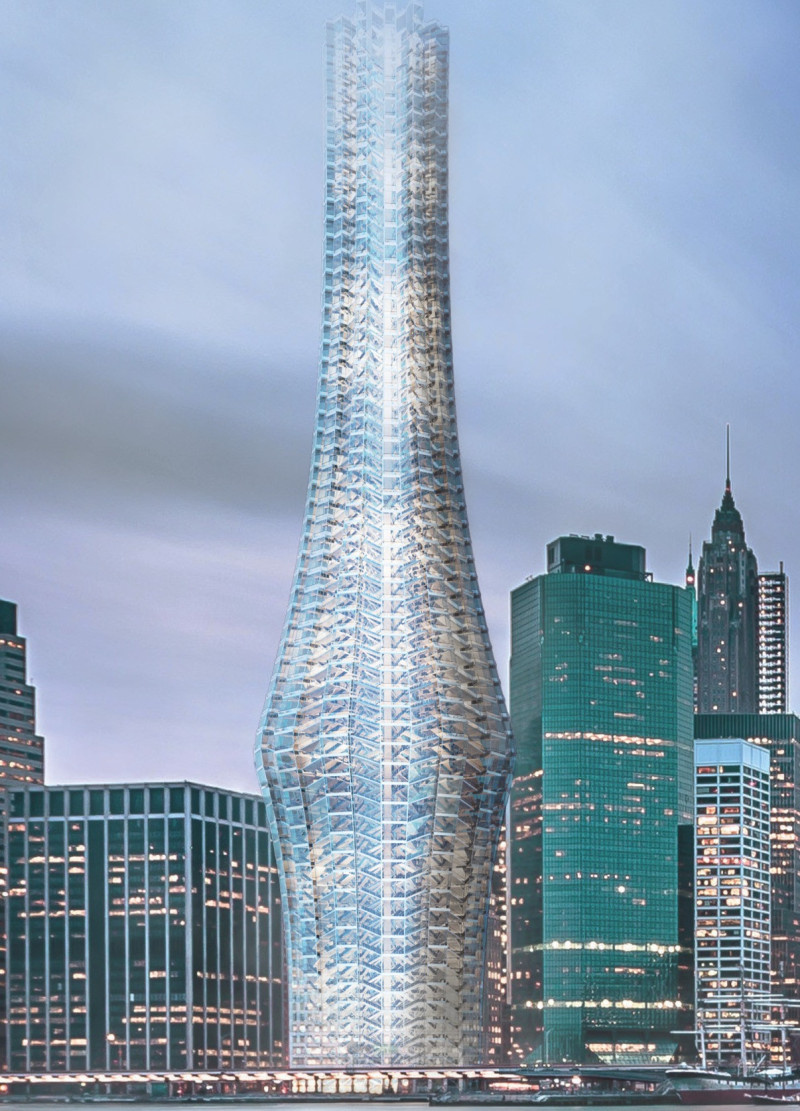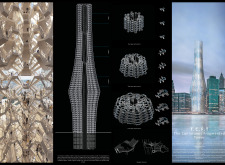5 key facts about this project
The primary function of the Continuous Fragmented Tower is to provide residential and communal spaces that foster social interaction while maintaining individual privacy. The design encourages a flow of movement, allowing occupants to navigate the space freely. The building’s strategic organization ensures that communal areas are centrally located, reinforcing community ties among residents.
The architectural composition of the tower features staggered segments that twist and turn, creating a visually engaging silhouette. This fragmentation not only enhances aesthetic appeal but also contributes to structural performance by distributing loads efficiently. Key parts of the structure include the modular assembly, which allows for adaptability; open-plan interiors that facilitate natural light; and communal spaces designed for interaction.
Unique aspects of this project include its focus on sustainable materiality. The Continuous Fragmented Tower utilizes reinforced concrete for its structural framework, complemented by a glass façade that balances transparency and interior comfort. Additionally, sustainable cladding materials are incorporated to improve energy efficiency, establishing a reduced ecological footprint while enhancing the building's performance.
The commitment to modular design allows for future adaptability, addressing the evolving needs of urban environments. The approach resonates with contemporary architectural trends aimed at promoting resiliency in design and construction.
For a more in-depth understanding of the building's composition and functionality, readers are encouraged to explore the architectural plans, architectural sections, and architectural ideas behind the Continuous Fragmented Tower. This project illustrates how innovative design can redefine residential living in urban contexts.























